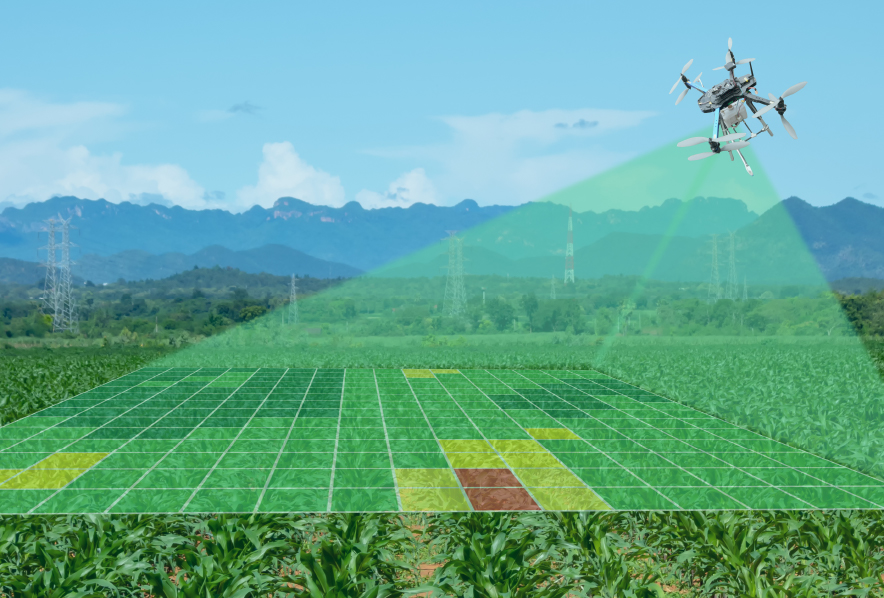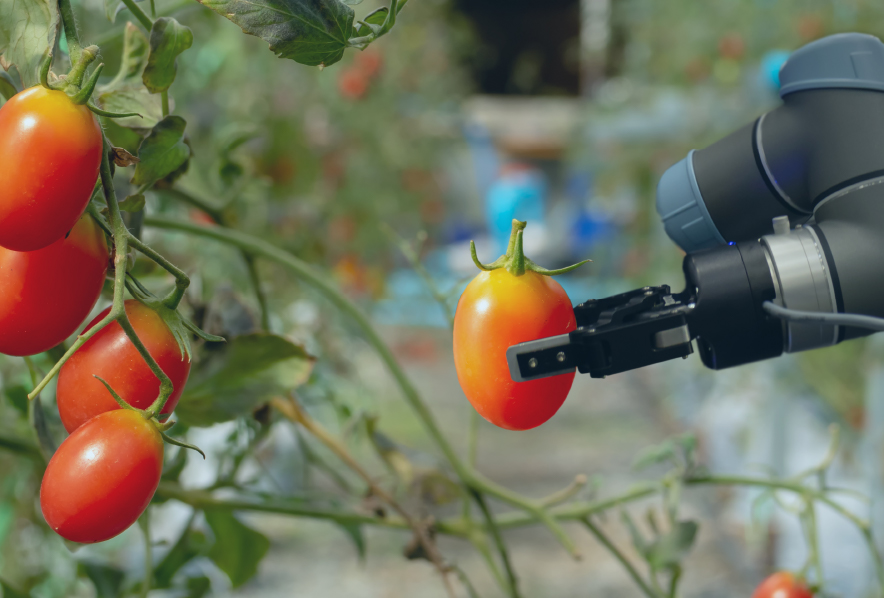Today, the world is showing us new developments, reform of existing industries and the creation of new businesses that utilize technologies like 5G, IoT, and AI, revitalizing countries and regions, providing greater safety and security for lifestyles, social systems, and environmental conservation. More and more fusions of technology that never existed before, such as electrification and remote control, robotics, and smart technology through digital transformation, are demanded from many fields. Computar will continue to meet these new latent needs through advanced collaboration with cutting-edge development manufacturers, system integrators, and research institutions, with a view to even higher resolutions, advanced sensing technologies, next-generation solutions using ultra-high resolution sensors, expanded wavelengths, and spectral imaging technology.

Drones are being used for more and more different purposes in both consumer and industrial sectors. In particular, as drone sensors become increasingly sophisticated, we expect growth in needs such as remote sensing agriculture such as NDVI and NDMI, distribution, construction, disaster prevention, nature conservation and observation, building maintenance and inspection, surveying, and aerial photography. In future, sensing technology as autonomous control functions will be extremely important for understanding surroundings such as when dealing with diverse obstacles, flying at night, flying outside visual range, or extending flight ranges. On-board camera resolutions are becoming increasingly higher due to the need to survey more precisely than VGA, while at the same time, a key point is to make lenses that are smaller and lighter. Computar is helping make drones smaller through lightweight, compact designs, and our high-resolution, low-distortion designs suited for surveying or observation allow data to be obtained more precisely and accurately. Moreover, by combining a hyperspectral or multispectral camera with Computar’s ViSWIR series, information can be obtained over a broader wavelength range than previously possible. Drones will be used for more and more as the sensors on them offer advanced functions, so we expect demand will increase in multiple fields. Working in conjunction with a range of industries and technical fields, Computar leads the global market in lenses for drones to serve as their eyes, the most important part of a drone.

Computar lenses have been widely used in primary industries such as agriculture and fishery for visually inspecting products, checking farm or fishery conditions, and bird or vermin monitoring. However, agriculture image sensing technology that uses IoT and AI is finding more use in countries around the world today. For example, in the field of agriculture, automated operation of environmental control systems based on analysis of information such as analysis of fruit moisture/sugar content, growth condition monitoring, and analysis of disease, pests, and water quality is being carried out to try to make work more efficient by reducing the amount people need to move and work, and stabilize harvests. In initiatives like this, lenses, the “machine eyes," are being used more and more in things like drones for aerial photography, unmanned tractors, and automated harvesting robots. We also expect to see greater needs in future for image sensing, allowing visualization for things like harvest predictions or consumption forecasts that can be read from the growth status of crops through the use of farmland analysis or NDVI analysis using aerial photography. At Computar, we use our diverse lineup and unique cutting-edge technology to respond to the sensing needs expected to arise in the field of agriculture. We will promote innovation from the optical aspects of IoT and AI technology by making full use of the information about trends we can obtain from the CBC Group's organic pesticide business.

In the field of sports, Computar lenses have already been used widely for purposes such as stadium monitoring in the security field and counting attendance through image analysis. However, today, with the progress of sports science, the analysis and management of data from a range of aspects is becoming a vital part of improving athletes’ performances and team strategies. In particular, motion capture to analyze exercises and movement is used for training to improve the performance of athletes. AI judgments and image analysis from multiple angles of games or events are used to construct strategies for teams. For spectators as well, there are increasing needs for a range of different image analysis technologies. These include 3D images taken from multiple angles or automated tracking shots using drones, as well as video assistant referees (VAR) that can determine the outcome of a contest and in the field of goal-line technology. In addition, the recent trend in wearable cameras for health improvement, and the popularity of e-sports over the world, mean that a range of image sensing technologies are needed. At Computar, we can cover a broad range of uses with our wide variations in lenses that cover everything from security lenses for monitoring, large-format, high-resolution lenses for image analysis of athletes or games from multiple angles, and ultra-telephoto zoom lenses that can magnify many multiples of times to make it seem as if spectators are in the thick of the action. In all three aspects of “play, watch, and referee,” Computar will support the sports science revolution through the latest in optical technology such as 5G, IoT, AI, and high-precision sensing.
